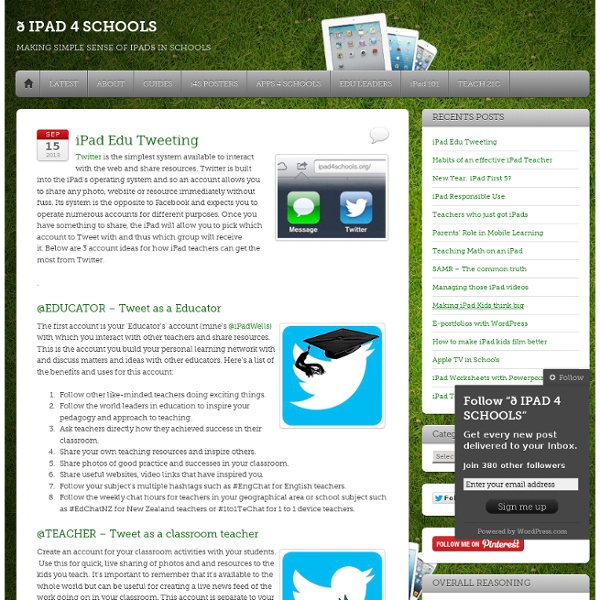A Teacher’s 3 Twitter Accounts

The Complete Guide To Twitter Hashtags For Education
What is a hashtag? A word or phrase preceded by a “#.” Twitter can be a busy place with lots of tweets–and thus lots of “noise.” A #hashtag is a way to aggregate tweets that are appended with a hashtag. Picture it like a magnet that attracts all messages categorized by that topical word or phrase. See also 50 Of The Best Education Accounts On Twitter Anyone. What else do I need to know? Don’t hashtag spam–if your tweet doesn’t add to that hashtag’s topic, discussion, or user base, don’t add the hashtag.Use more than one hashtag if it applies to more than one topic, but choose wisely. Meeting Times Many of the hashtags have “meeting times” where educators agree to “meet and tweet”–that is, send out messages on a topic at a certain time on a certain day. If you do participate at the agreed upon time, you’ll see the tweets stream in live and participate in said conversation (via twitter) in what is nearly real-time. Updated: Added #edcamp, #ukedchat, #whatisschool Trends General Content Areas iPad
Map creator online to make a map with multiple color pins and regions
Twitter is a Teacher Superpower!
“We all know that education budgets are getting cut more and more, and that meaningful professional development opportunities have unfortunately become a bit of an oxymoron in education. Not only can being a “connected educator” help change that, but it can also provide you with ongoing inspiration and support. I’d even go as far to argue that being connected will be the most impactful thing you can do in your career.” I will even go far enough to say that becoming a connected educator is a Teacher Superpower! While I can come up with pretty new and innovative ideas while planning inside my classroom, I can gain so much more from sharing my ideas, collecting ideas on Twitter (known jokingly as #ideabandits), and connecting with other educators to collaborate about even more inspiring ideas. Here is how: Get yourself logged onto Twitter and sign up for an account using your computer, iPad, or smartphone. Next step is to add an image of yourself. Last, add a bio. One last thing.
PowToon, free business presentation software animated video maker and PowerPoint alternative
Related:
Related:



